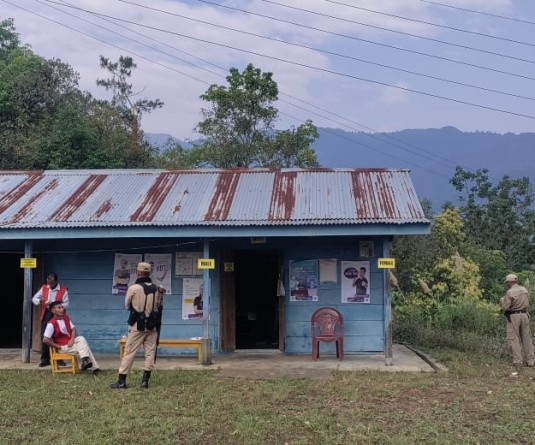
Villages wiping out teak plantations citing environmental hazard
Dimapur| August 7 : Teak is the common name for the tropical hardwood tree species ‘Tectona grandis’ and its wood products. Tectona grandis is native to Southeast Asia, mainly India, Indonesia, Malaysia, and Burma, but is naturalized and cultivated in many countries. Burma accounts for nearly one third of the world’s total teak production. Teak is one of the world’s most valuable timbers and an economically viable solution to the production of the much needed wood and there was a time when acres of land in Nagaland were being cleared off to plant teak trees.
Over the years though, there has been misgivings over the environmental impacts of teak plantations - particularly controversies regarding possible soil deterioration and erosion in pure teak plantations - rivaled those often associated with eucalyptus plantations. Further controversy has been generated that it poses health hazards to communities living around teak plantations. In Nagaland also, this has generated some kind of fear and it is learnt that a number of villages on the outskirts of Dimapur are randomly doing away with teak plantations. Some villages have ordered cultivators to remove the plantations within a stipulated time.
Villagers here are under the assumption that teak wood is destroying their land and also giving respiratory problems to people living in the vicinity. One man claimed that some people from his village are suffering from “asthma” and “allergies.” The villagers are convinced that it is due to the hairy leaf from the plant. They also said that no other vegetation survives around the teak plantations. The cultivators in this village have been ordered to cut down their teak plants covering nearly 60 acres of land, by December this year.
Forest officials are worried saying that there is no “scientific proof” that teak is hazardous to the environment or the human health. The officials said it is true that very little diversity grows near teak plantation but that is mainly due to mono-plantation which affects the soil over a period of time. The teak leaf which is hairy and coarse also takes a lot of time to decompose, making it difficult for the soil to replenish.
Dimapur has a vast area under teak plantation and forest official are worried that random felling of the trees will cause environmental harm. “It is the other way round actually,” one forest official under Dimapur sub-division said. He said that cutting down tree plantations- be it teak or any other- will harm the environment. He said that this “rumor” has surfaced some years ago and the department has tried to advise people against cutting down teak trees. But for some reasons people are still under the impression that teak is bad, the official said. Further, he said that Nagas tend to cut teak wood before it matures, making it less profitable than the ones found in the Assam forests. Teak takes about 30 years to mature. Forest officials have said that wiping out teak plantation must be discouraged as it would reduce forest cover to a large extent.
Over the years though, there has been misgivings over the environmental impacts of teak plantations - particularly controversies regarding possible soil deterioration and erosion in pure teak plantations - rivaled those often associated with eucalyptus plantations. Further controversy has been generated that it poses health hazards to communities living around teak plantations. In Nagaland also, this has generated some kind of fear and it is learnt that a number of villages on the outskirts of Dimapur are randomly doing away with teak plantations. Some villages have ordered cultivators to remove the plantations within a stipulated time.
Villagers here are under the assumption that teak wood is destroying their land and also giving respiratory problems to people living in the vicinity. One man claimed that some people from his village are suffering from “asthma” and “allergies.” The villagers are convinced that it is due to the hairy leaf from the plant. They also said that no other vegetation survives around the teak plantations. The cultivators in this village have been ordered to cut down their teak plants covering nearly 60 acres of land, by December this year.
Forest officials are worried saying that there is no “scientific proof” that teak is hazardous to the environment or the human health. The officials said it is true that very little diversity grows near teak plantation but that is mainly due to mono-plantation which affects the soil over a period of time. The teak leaf which is hairy and coarse also takes a lot of time to decompose, making it difficult for the soil to replenish.
Dimapur has a vast area under teak plantation and forest official are worried that random felling of the trees will cause environmental harm. “It is the other way round actually,” one forest official under Dimapur sub-division said. He said that cutting down tree plantations- be it teak or any other- will harm the environment. He said that this “rumor” has surfaced some years ago and the department has tried to advise people against cutting down teak trees. But for some reasons people are still under the impression that teak is bad, the official said. Further, he said that Nagas tend to cut teak wood before it matures, making it less profitable than the ones found in the Assam forests. Teak takes about 30 years to mature. Forest officials have said that wiping out teak plantation must be discouraged as it would reduce forest cover to a large extent.




